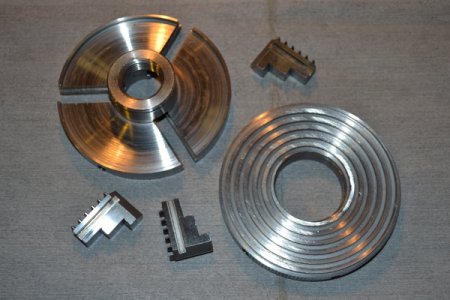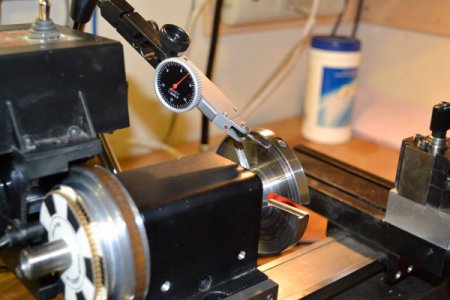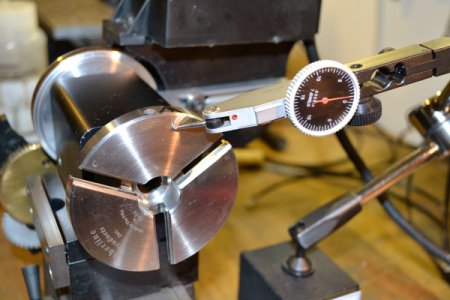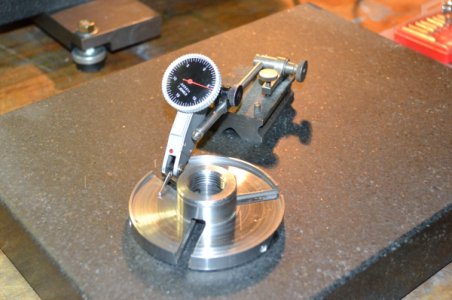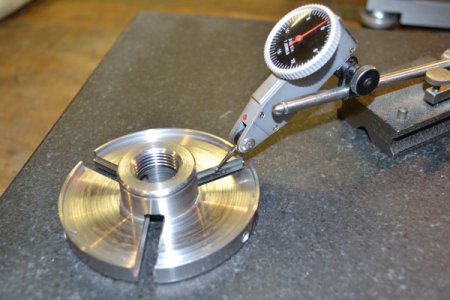- Joined
- Sep 24, 2012
- Messages
- 484
FWIW- Bison makes a new 3-jaw chuck to fit Sherline. At $350, it's not cheap, but it may be what you're looking for.
Lee, thank you for the heads-up re: Bison. I'm currently out of town visiting family so when I get home I'll investigate the Bison line. At one time, I went through their products, but I did not see anything suitable.
Doug,
What you describe doesn't sound like runout at all to me. It sounds like the axis of rotation of the headstock is not parallel to the travel of the cross slide. It that is the case, you will cut a tapered cylinder. Chuck up a piece of stock a few inches long and take a cut. Mike the diameter at the beginning and end of the cut. If it is not the same that clinches it. Even with the alignment key in place, it may be possible to adjust parallelism a few thou. Also make sure that that the alignment key is installed with the ground sides of the key against the sides of the slot.
You don't say how you measured the veering off. The way to do it is with an indicator in the tool post.
Further checks: Indicate the drill rod in a collet, a well-centered 4 jaw chuck, and the 3 jaw. Are the results similar? Rotate the spindle by hand. Does the rod wobble?
"Self centering chuck" is a very misleading term. None of them are. They are not intended to be a centering datum. They are intended to be a way to quickly and firmly hold a work piece. If your work piece requires two or more coaxial diameters, and you use a 3 jaw chuck, you must cut each diameter in the same setup, without loosening the chuck. If this can't be done, you must cut the first diameter, then center on it in a 4 jaw to cut the others. Or, hold the first cut diameter in a collet.
For more on headstock alignment Google "Rollie's Dad's Method".
Finally, here's a fixture I've added to my Sherline to make and hold a very accurate spindle alignment.
Best regards,
David Clark in Southern Maryland, USA
View attachment 62850
David, thank you for your input. Here's how I know something's wrong with my 3-jaw chuck: my 4-jaw independent chuck (also a Sherline) holds work concentric to the headstock with NO veering off to the side. That is to say, when I chuck up a piece of 3/16" hardened drill rod in my 4-jaw, I can adjust it until the drill rod reads zero deviance with my DTI, held in my sliderest (I use the sliderest instead of the toolpost) when measuring 1/16" from the chuck jaws. Then, sliding the DTI over 2", the readings consistently show .005" to .006" wobble, and the HIGH point is always the same place relative to the #1 & #3 jaw. The VERY SAME test with my 4-jaw independent chuck reveals the exact same deviance from concentricity adjacent to the jaws and 2" away from the jaws. Therefore, the problem lies with my 3-jaw chuck and not the headstock or my 4-jaw.......UNLESS I'M MISSING SOMETHING!! I'm a newbie at machining, but I'm making my deductions from what seems to be bulletproof logic...but then again, it might be that I know just enough to be dangerous!


